Apart From Oil Futures, Agricultural Commodities Skyrocket!
Commodity index expected to post biggest weekly gain since 1960. In recent weeks, in addition to $Light Crude Oil - main 2204(CLmain)$ , another futures gainer that may be ignored is agricultural commodities futures.
Let's look at the current trends of $Wheat - main 2205(ZWmain)$ and $Corn - main 2205(ZCmain)$
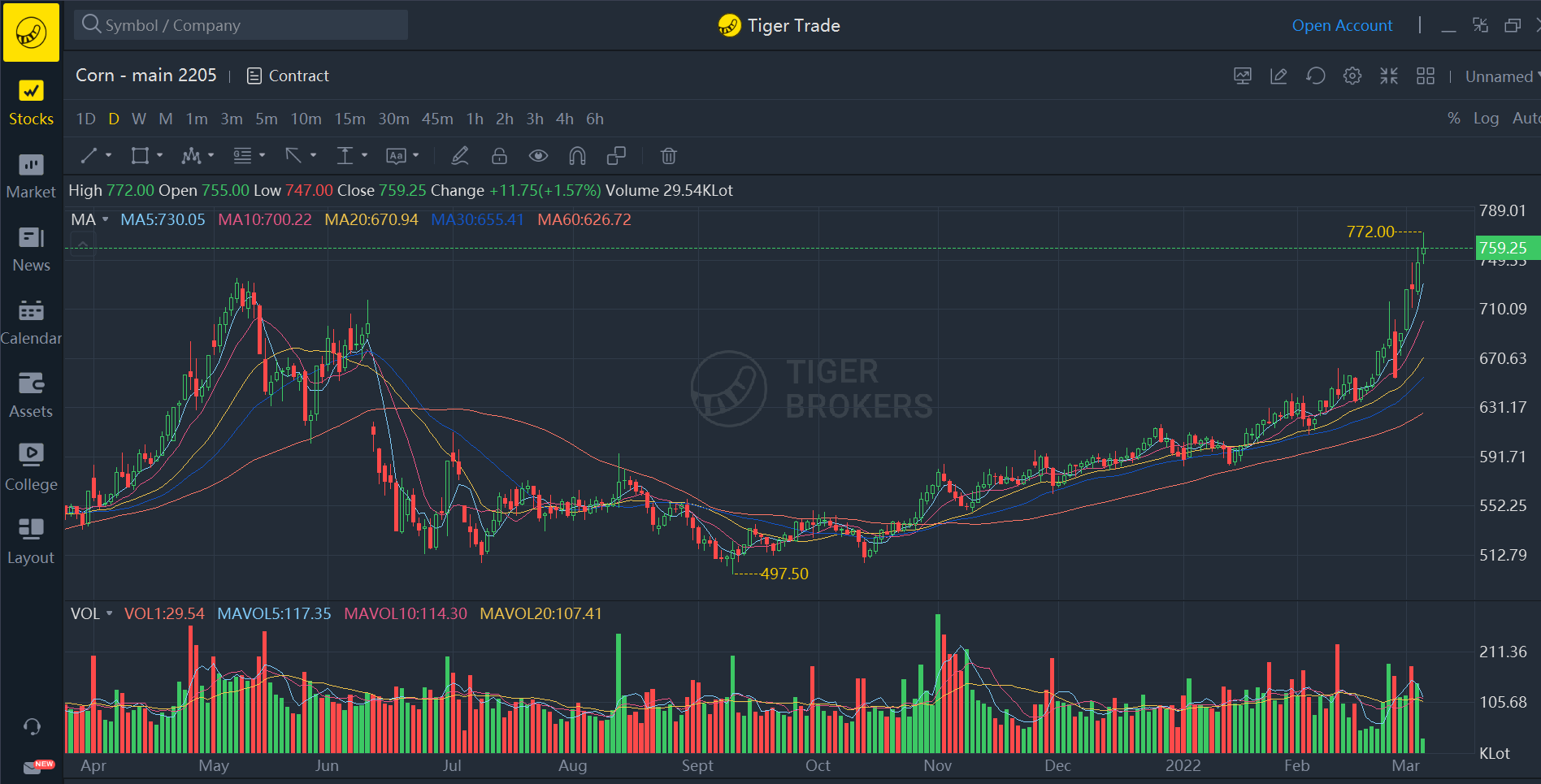
- What is the connection between the surging agricultural futures and the conflict between Russia and Ukraine?
- Do we have buying opportunities at such high prices?
The fundamental of global agricultural commodities
Before the conflict between Ukraine and Russia started, prices of agricultural products have been gradually climbing.
In terms of the supply:
the market has previously been speculating about the decline in global agricultural production that will be caused by La Niña; in recent USDA reports, the acreage of agricultural products is generally less than expectation.
In terms of the demand:
global consumption is increasing.
So agricultural commodity prices is on an upward trend fundamentally.
In the USDA report released this February, production estimates for soybeans and corn in major producing countries such as Brazil and Argentina were generally revised downward to almost the same level as the US production estimates.
The report shows that the Stock/Usage Ratio for agricultural commodities has seen a long-term pullback as global consumption continues to rise.
Rising demand and lower production expectations caused agricultural products to gradually start rising as early as January of this year.
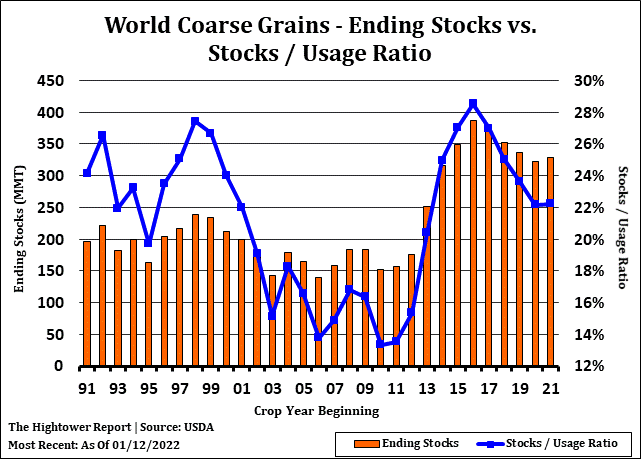
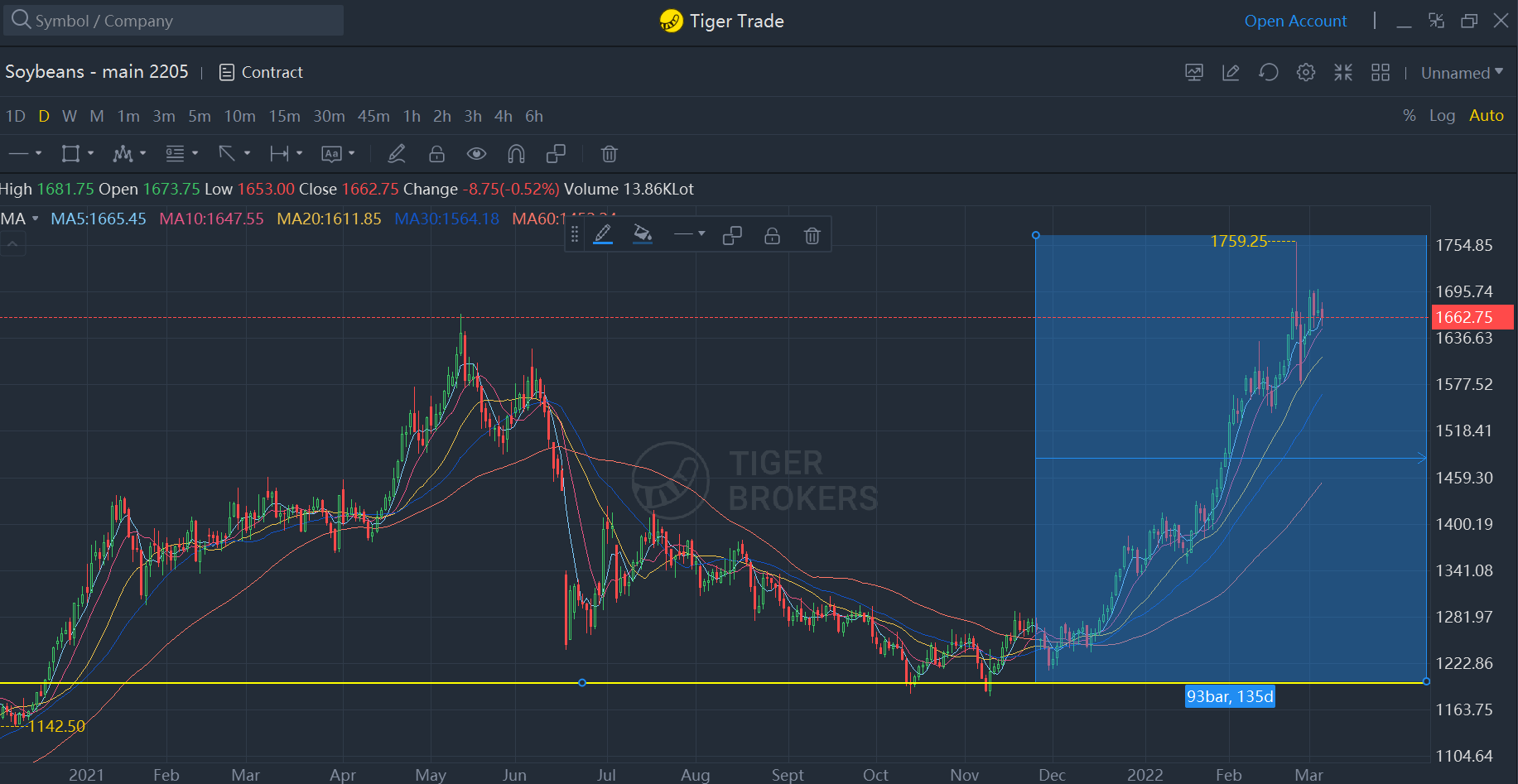
The relationship between the conflict and agricultural commodities
Wheat
First of all, Russia is a major wheat exporter, which accounts for 46.36% of the country's production.
The total area of agricultural land in Russia is about 220 million hectares. Russia's farming industry is dominated by cereals, including wheat, barley, oats and rye.
Secondly, Ukraine is another major wheat exporter.
These two countries account for more than 1/4 of the global wheat trade.
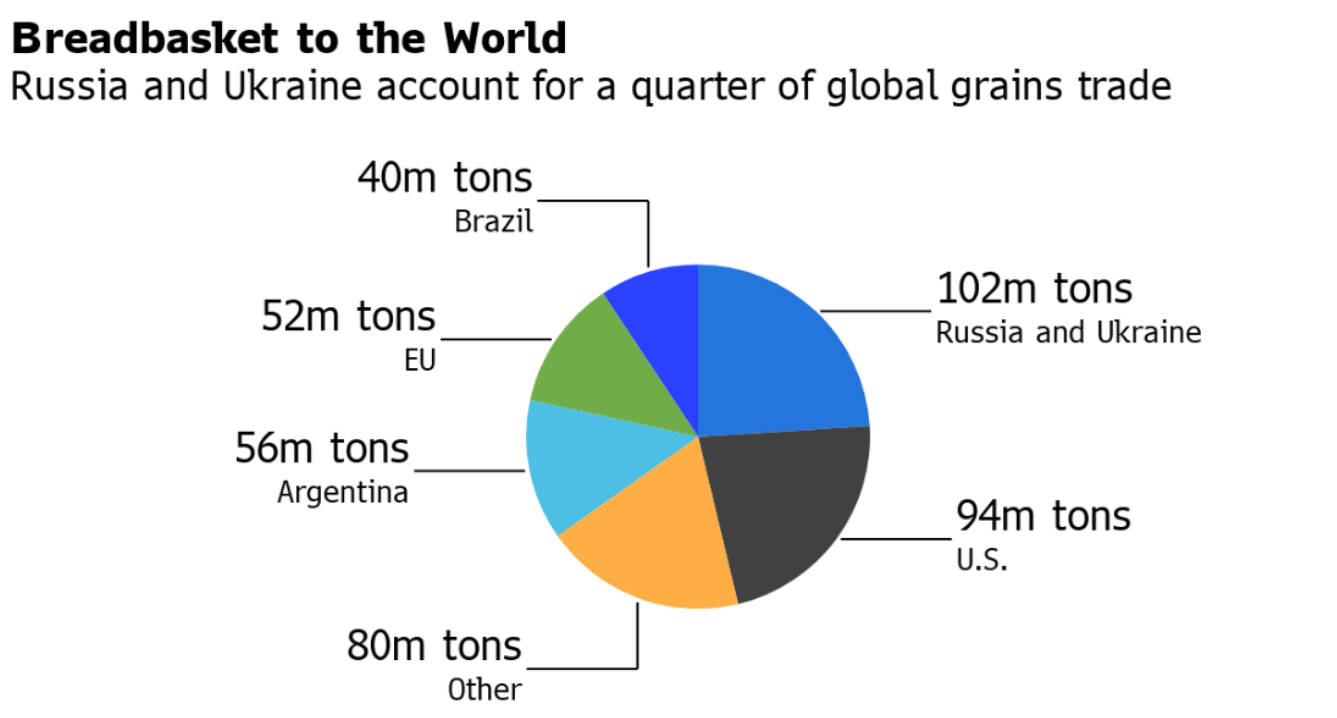
Therefore, a large amount of agricultural trade will transfer to US in the future. The price of agricultural products within Europe and the United States is bound to rise.
European milling wheat futures has increased by 25% in 5 days.
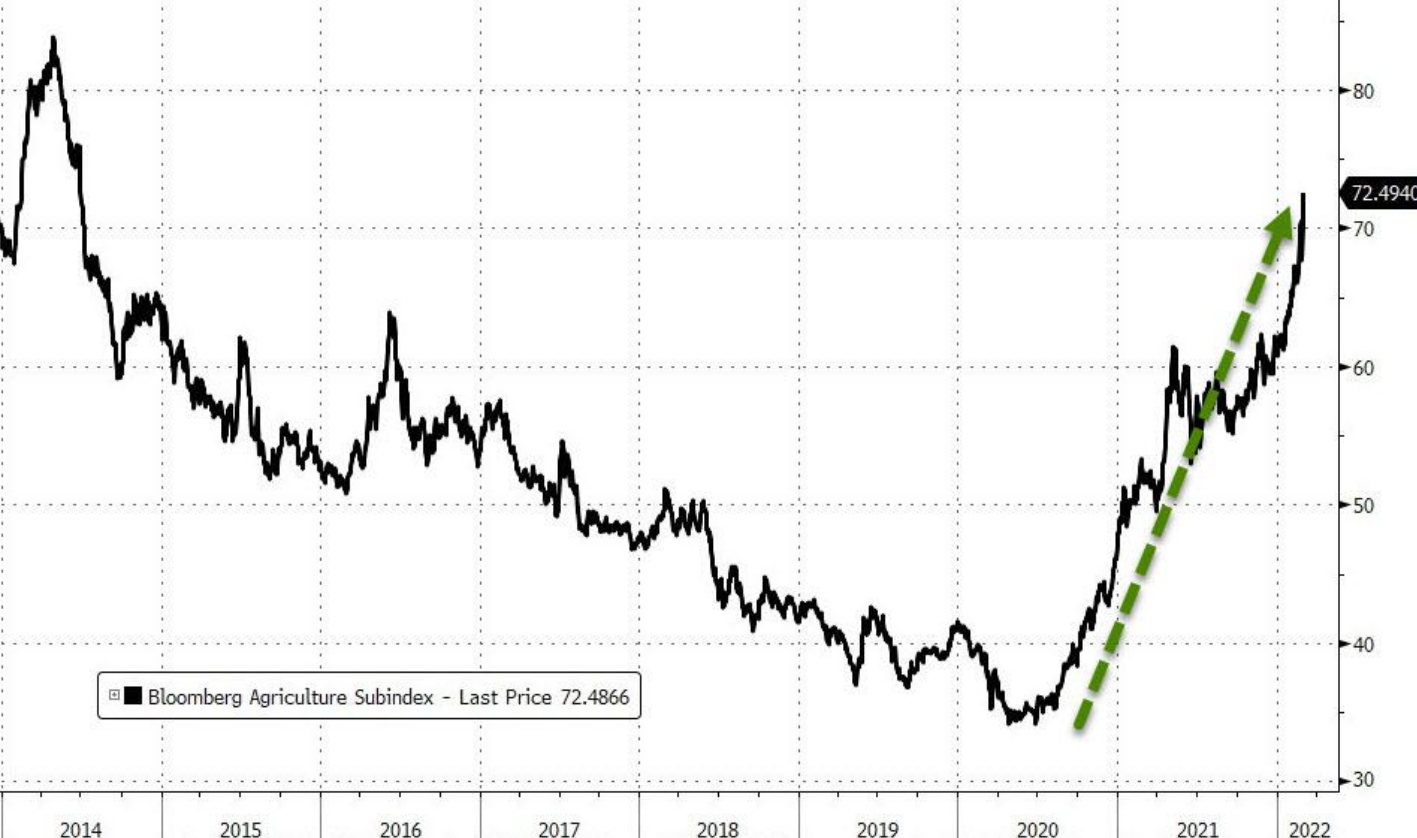 Corn
Corn
Russia and Ukraine are the world's leading corn exporters, with the two countries together accounting for 18.6% of global exports. That corn trade will also shift to other countries in Europe and US.
The weekly export inspection report released by the USDA on Monday showed that US corn export inspection volume last week increased 8.3 percent week over week, up 23.4% year over year. If the war between Russia and Ukraine continues to escalate, the demand for US corn will continue to increase.
Conclusion
So, the rally in agricultural commodities is likely not over.
But the historical pattern shows that soybean has risen to its high point. If you want to long agricultural commodities, corn and wheat might be good opportunities.
But if the situation in Ukraine and Russia eases, wheat is bound to fall sharply with such high prices. You have to be careful if you want to sell at the top.
If you're curious about agricultural commodities, you can learn about $iPath Series B Bloomberg Agriculture Subindex Total Return ETN(JJA)$
Disclaimer: Investing carries risk. This is not financial advice. The above content should not be regarded as an offer, recommendation, or solicitation on acquiring or disposing of any financial products, any associated discussions, comments, or posts by author or other users should not be considered as such either. It is solely for general information purpose only, which does not consider your own investment objectives, financial situations or needs. TTM assumes no responsibility or warranty for the accuracy and completeness of the information, investors should do their own research and may seek professional advice before investing.

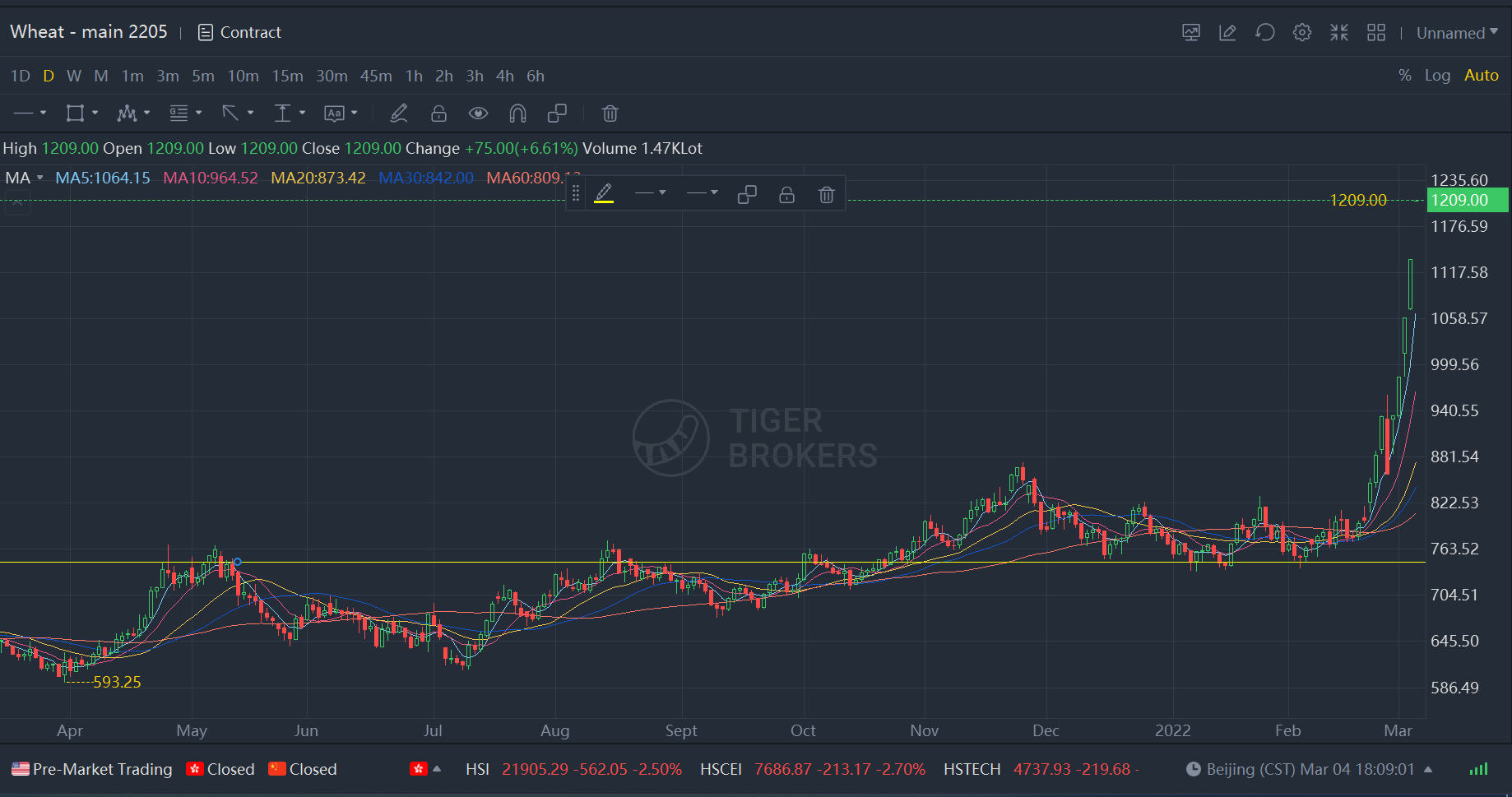
[smile] [smile]